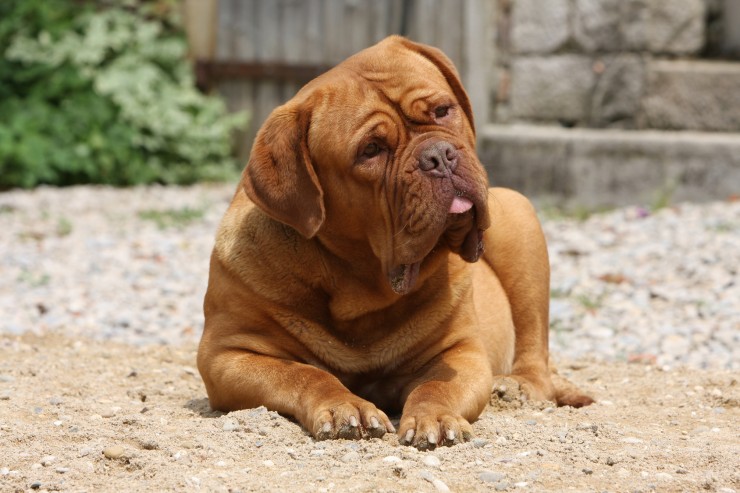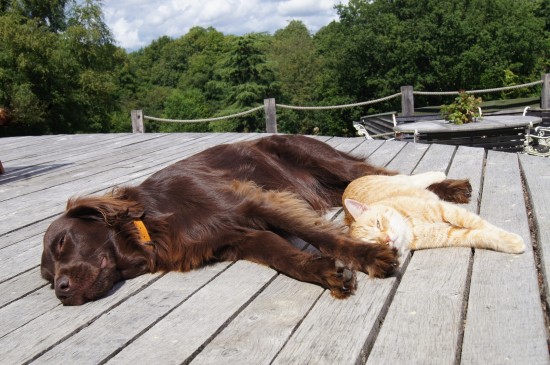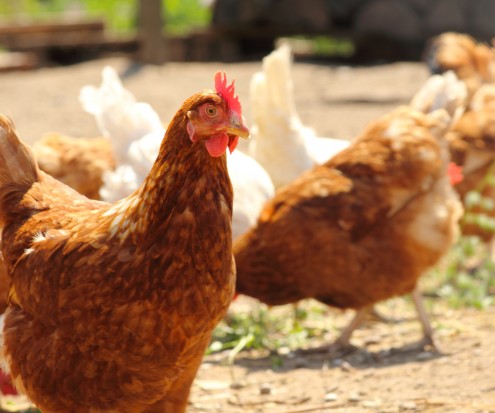

Keeping your dog fit, healthy and active into their old age is something that you as the owner can have a great impact upon, by taking care of all of your dog’s needs and getting ahead when it comes to preventative healthcare and taking care of your dog with their longevity in mind.
Things like feeding the correct diet for your dog’s size and life stage, ensuring that they are vaccinated and kept up to date with their boosters, exercising them to a suitable level and ensuring that you don’t ignore problems in the making such as rotting teeth and inflamed gums all play their part!
However, there are also several hereditary factors that can influence your dog’s eventual lifespan, and their quality of life in old age too. Some of these depend on certain breed-specific propensities to certain age-related conditions, whilst others depend on the size, bulk and weight of your dog itself, in terms of their breed norms rather than those factors that you can manage by means of diet and exercise.
In this article, we will look at these size and breed specific factors in more detail, in terms of what they mean for your dog’s longevity and health in old age. Read on to learn more about how the size and breed of your dog can affect their lifespan.
As a very broad rule or guideline, dogs are considered “mature” or reaching old age when they hit the age of around seven or eight-if your dog is insured, you will almost certainly notice that your premiums will jump up somewhat at your renewal at this time.
Past these ages, dogs are often considered to be elderly, although how active your dog is and the specific signs of aging that they display can be highly variable from dog to dog, even between those from within the same breed.
Whilst it is not uncommon for certain breeds and types of dogs to live well into their mid or even late teens, certain breeds normally live for a much shorter lifespan as the norm, with as low an age as eight or even less being the average for certain breeds, such as the Dogue de Bordeaux.
It is a simple fact that large and particularly giant breeds tend to live shorter lives than small breeds, with few giant breeds commonly living much past the age of eight to ten years. This is largely attributed to the fact that the sheer bulk and weight of such large dogs, even those of a perfectly healthy weight, are more prone to exhibiting signs of wear and tear on the joints and organs as they age, such as arthritis, failing joints, and heart conditions.
Added to this, the smaller and more delicate the dog, the more aware their owners are likely to be about their perceived fragility, and so, toy dogs are exponentially more likely to be considered as vulnerable and in some ways, wrapped in cotton wool compared to larger dogs, when in fact, it is larger and heavier dogs that are more prone to aging-related problems!
Dogs whose breed predisposition tends towards the lean, light side tend to live longer lives than dogs that are large, heavy and stocky. While keeping your dog at the appropriate weight for their breed goes a long way towards warding off preventable weight-related health problems, dogs that are naturally very large and heavy such as the Newfoundland or the Bernese Mountain Dog have a much higher body fat percentage even at a healthy weight than many small and medium breeds, such as the Border collie.
A heavy bodyweight, even if the weight is within the healthy norms for the breed, places much more stress on the joints, which can lead to common large-breed problems in old age such as arthritis and weakening bones and joints. The major organs of the dog too will be placed under a higher level of stress as a result of the dog’s weight, forcing the heart, lungs and liver as well as all of the other major organs to work harder than they do in smaller dogs, and so, increasing the speed at which these organs age and ultimately begin to fail.
There is little to nothing that you can do to change or affect your dog’s breed-specific propensities to certain aging issues that are dependent on the size and weight of your dog, but there are several things that you can do to ensure that you do not speed up or worsen a potential problem in the making.
You should of course ensure that your dog is kept at an appropriate weight for their breed, which means paying attention to what and how much you feed to your dog, and ensuring that it is a good match for their breed and life stage.
You should also do what you can to keep your dog fit and able to stay active into old age, by ensuring that they receive enough walks and exercise, but keeping such exercise low-impact to avoid placing additional strain on the joints and muscles.
Talk to your vet ASAP if you have any concerns about your dog’s health or weight, and when they do reach old age, consider scheduling regular six monthly health checks with the vet, as opposed to the usual once a year checks that accompany your dog’s vaccination boosters.
 More About Mastiff Dogs And Their Traits
More About Mastif
More About Mastiff Dogs And Their Traits
More About Mastif
 Is There A Difference Between Scottish Fold Cats & American Curl Cats?
Is There A Differ
Is There A Difference Between Scottish Fold Cats & American Curl Cats?
Is There A Differ
 Why Do Dogs Twitch When They Are Sleeping?
Why Do Dogs Twitc
Why Do Dogs Twitch When They Are Sleeping?
Why Do Dogs Twitc
 Marketing Your Pet Services at the Next Pet Show
A trade show prize wheel can be a powerful marketing tool in
Marketing Your Pet Services at the Next Pet Show
A trade show prize wheel can be a powerful marketing tool in
 Understanding A Chickens Digestive System & Crop Function
Understanding A C
Understanding A Chickens Digestive System & Crop Function
Understanding A C
Copyright © 2005-2016 Pet Information All Rights Reserved
Contact us: www162date@outlook.com